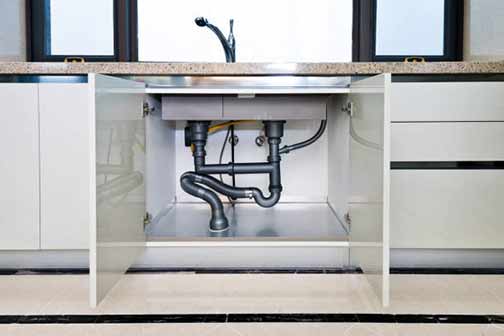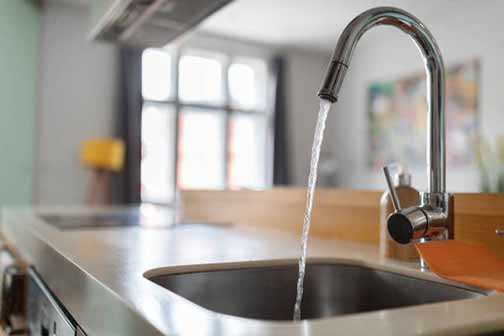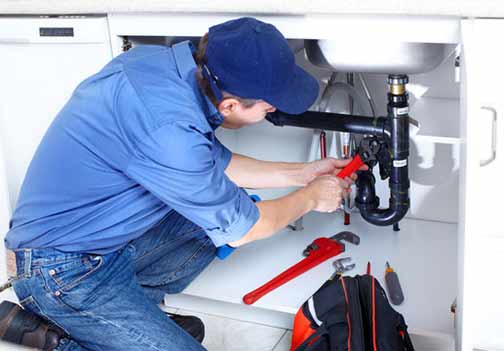
The kitchen sink is a fundamental component of any household, serving as a hub for cooking, cleaning, and food preparation. However, like any frequently used fixture, it is susceptible to a range of plumbing issues. Understanding the basics of kitchen sink plumbing can help homeowners identify and resolve common problems efficiently, ensuring the long-term functionality and hygiene of this vital kitchen feature.
Recognizing Common Kitchen Sink Plumbing Problems
Kitchen sink plumbing issues can manifest in various forms, each with its own set of symptoms and potential causes. By recognizing these common problems, homeowners can take proactive steps to address them before they escalate into more serious concerns.
Clogged Drains: A Frequent Nuisance
Clogged drains are perhaps the most common issue faced by homeowners. They can result from a buildup of food particles, grease, soap scum, and other debris that accumulates over time. When water drains slowly or not at all, it can disrupt daily activities and lead to unpleasant odors.
To prevent clogged drains, regular cleaning and maintenance are essential. Using a sink strainer to catch food particles and avoiding the disposal of grease down the drain can significantly reduce the likelihood of blockages. In cases where clogs do occur, a plunger or a mixture of baking soda and vinegar can often clear the obstruction.
Leaking Faucets: Addressing the Drip
Leaking faucets are not only annoying but can also lead to increased water bills and potential water damage. The continuous dripping is often caused by worn-out washers, seals, or O-rings within the faucet assembly.
Repairing a leaking faucet typically involves disassembling the faucet to replace the faulty components. This task can often be accomplished with basic tools and a little DIY know-how. However, if the issue persists, it may be necessary to contact a local plumber to ensure a comprehensive solution.

Low Water Pressure: Troubleshooting the Flow
Low water pressure in the kitchen sink can be frustrating, making it difficult to rinse dishes or fill pots quickly. This issue can arise from multiple sources, including clogged aerators, mineral buildup in pipes, or issues with the municipal water supply.
To address low water pressure, homeowners should first check the aerator, a small screen located at the tip of the faucet. Cleaning or replacing the aerator can often restore normal water flow. If the problem persists, further investigation into the plumbing system may be required to identify and resolve underlying issues.
Garbage Disposal Malfunctions: Keeping the Unit Running Smoothly
Garbage disposals are convenient appliances that help manage kitchen waste, but they can encounter problems such as jams, leaks, or strange noises. These issues can often be traced back to improper usage or wear and tear over time.
To maintain a functional garbage disposal, it is crucial to avoid disposing of non-food items, fibrous vegetables, or large quantities of food at once. Regular cleaning and the occasional use of ice cubes or baking soda can help keep the blades sharp and the unit odor-free. In the event of a jam, turning off the power and manually rotating the blades with an Allen wrench can often resolve the issue.
Preventive Measures: Maintaining a Healthy Kitchen Sink
Prevention is the best approach to avoiding kitchen sink plumbing issues. Regular maintenance, such as cleaning the kitchen sink drain, checking for leaks, and inspecting the garbage disposal, can help identify potential problems before they become significant concerns.
Additionally, being mindful of what goes down the drain and using natural cleaning solutions can extend the life of the plumbing system. By adopting these preventive measures, homeowners can enjoy a smoothly functioning kitchen sink for years to come.
When to Call a Professional Plumber
While many kitchen sink plumbing issues can be resolved with DIY methods, there are situations where professional assistance is necessary. Persistent leaks, severe clogs, or complex garbage disposal problems may require the expertise of a licensed plumber to ensure a thorough and effective solution.
Knowing when to call a professional can save time, money, and potential damage to the home. A qualified plumber can diagnose issues accurately and provide long-lasting repairs, giving homeowners peace of mind.

Advanced Plumbing Techniques for Complex Issues
While basic plumbing skills can address many kitchen sink issues, some problems require advanced techniques. Complex issues such as pipe corrosion, severe blockages deep within the plumbing system, or faulty installation may necessitate more sophisticated solutions. Understanding these advanced techniques can empower homeowners to make informed decisions when consulting with professionals.
For instance, hydro jetting is a technique used to clear stubborn blockages by using high-pressure water jets. This method is effective for removing mineral buildup, grease, and other tough obstructions that traditional methods might not address. Additionally, trenchless pipe repair is a modern solution for fixing underground sewer lines without extensive excavation, preserving landscaping and reducing costs.
Eco-Friendly Plumbing Solutions
In today’s environmentally conscious world, many homeowners are seeking eco-friendly solutions for their plumbing needs. Implementing green plumbing practices can reduce water consumption, minimize waste, and contribute to a sustainable household. Simple changes, such as installing low-flow faucets and aerators, can significantly reduce water usage without compromising performance.
Furthermore, using biodegradable cleaning products and natural drain cleaners can help maintain a healthy plumbing system while protecting the environment. By adopting these eco-friendly solutions, homeowners can enjoy a functional kitchen sink while contributing to global sustainability efforts.
Future Trends in Kitchen Sink Plumbing
The world of kitchen sink plumbing is evolving, with new technologies and trends emerging to enhance convenience and efficiency. Smart faucets, equipped with sensors and automation features, are becoming increasingly popular, allowing for hands-free operation and precise water control. These innovations not only improve user experience but also promote water conservation.
Another trend is the integration of water filtration systems directly into kitchen sinks, providing clean and safe drinking water without the need for separate filters or bottled water. As technology continues to advance, homeowners can expect even more innovative solutions to enhance their kitchen sink plumbing experience.
Conclusion: Ensuring a Functional and Efficient Kitchen Sink
Kitchen sink plumbing issues are an inevitable part of homeownership, but with the right knowledge and proactive measures, they can be effectively managed. By understanding the common problems and their solutions, homeowners can maintain a functional and efficient kitchen sink, contributing to a well-organized and hygienic kitchen environment.
With regular maintenance and a willingness to address issues promptly, the kitchen sink can continue to serve as a reliable and indispensable part of daily life.

